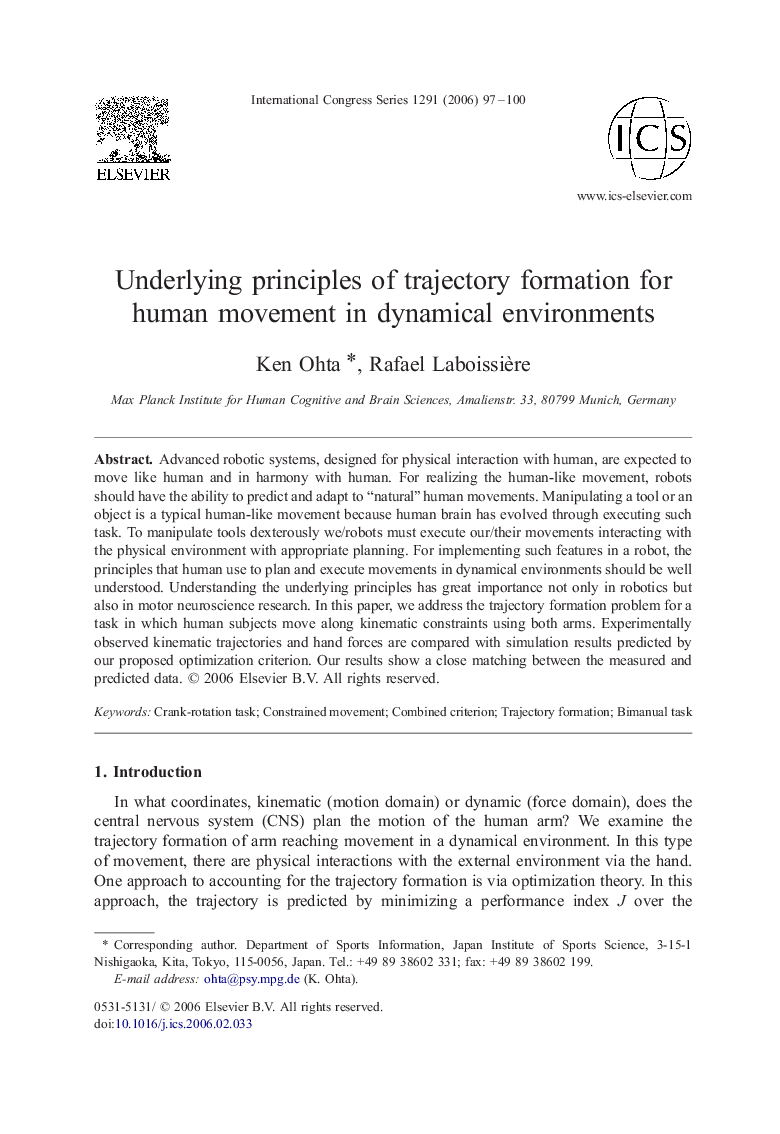| Article ID | Journal | Published Year | Pages | File Type |
|---|---|---|---|---|
| 2576964 | International Congress Series | 2006 | 4 Pages |
Advanced robotic systems, designed for physical interaction with human, are expected to move like human and in harmony with human. For realizing the human-like movement, robots should have the ability to predict and adapt to “natural” human movements. Manipulating a tool or an object is a typical human-like movement because human brain has evolved through executing such task. To manipulate tools dexterously we/robots must execute our/their movements interacting with the physical environment with appropriate planning. For implementing such features in a robot, the principles that human use to plan and execute movements in dynamical environments should be well understood. Understanding the underlying principles has great importance not only in robotics but also in motor neuroscience research. In this paper, we address the trajectory formation problem for a task in which human subjects move along kinematic constraints using both arms. Experimentally observed kinematic trajectories and hand forces are compared with simulation results predicted by our proposed optimization criterion. Our results show a close matching between the measured and predicted data.
